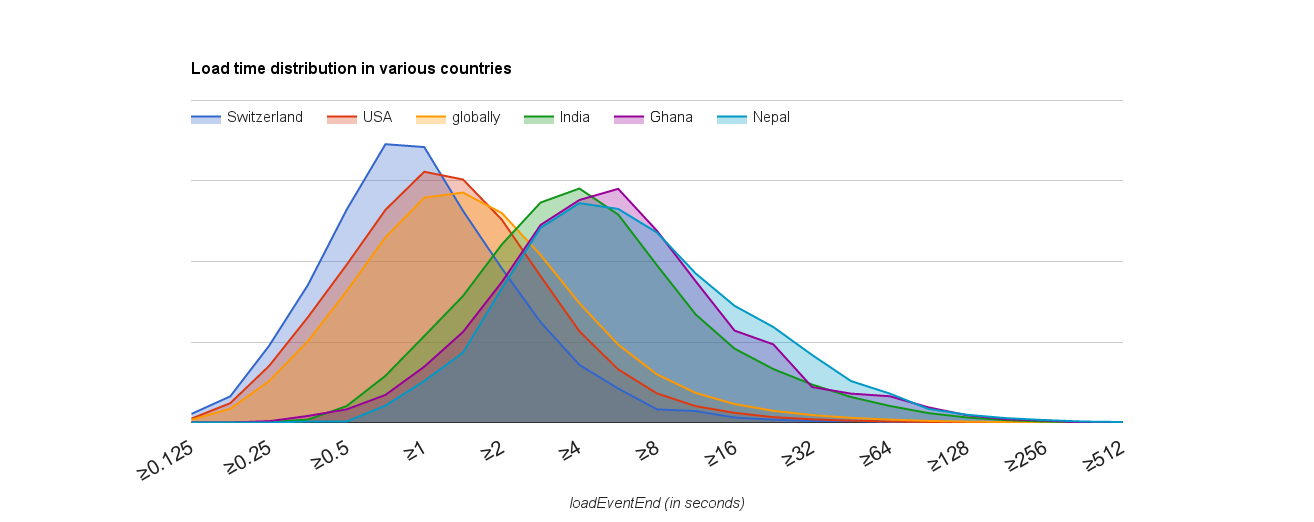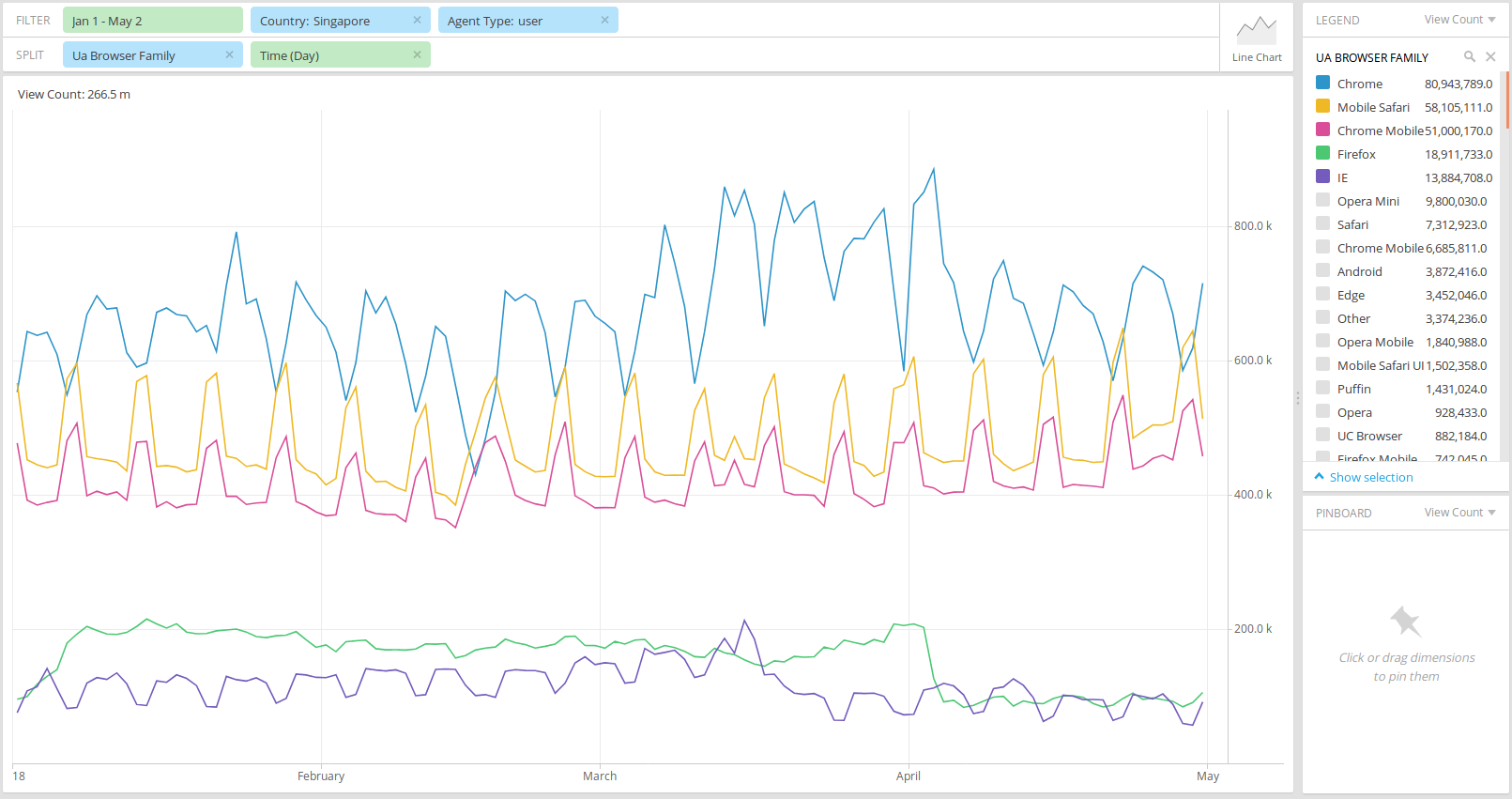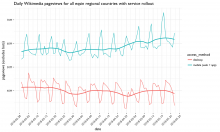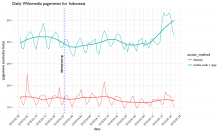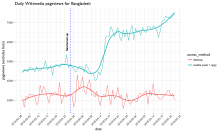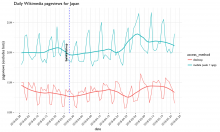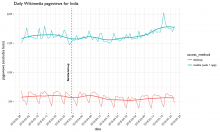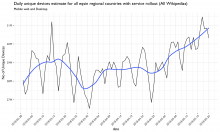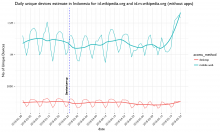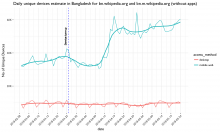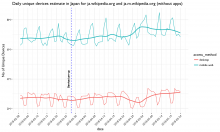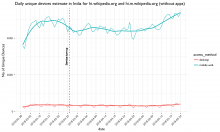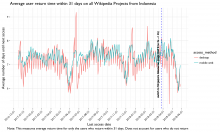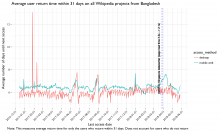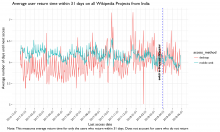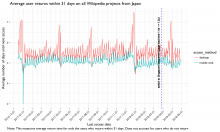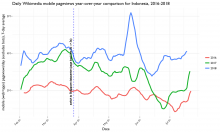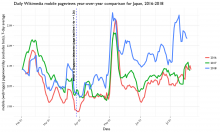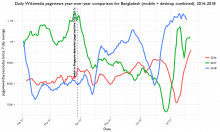Around the end of March, traffic started being routed through our new data center in Singapore (cf. T189252 and detailed timeline by country). The performance team has since published data on the performance impacts for readers, and this is a wonderful opportunity to test the hypothesis that if you make something faster on the internet, people use it more.
Let's look at any impact we can determine as a result of the change, using daily time series for the following metrics:
- Pageviews (possibly also separately for mobile and desktop)
- Unique devices (global version for all Wikipedias, possibly also per-domain version for the largest projects in the corresponding country)
- Average user return time within 31 days, based on the last-access data recorded in tbayer.webrequest_extract_bak)
- Year over year pageview comparison
For the following countries/sets of countries:
- Indonesia
- Bangladesh
- Japan
- India (March 28)?
- ....
(Exclude Singapore itself per T184677#4188563 ff.)
